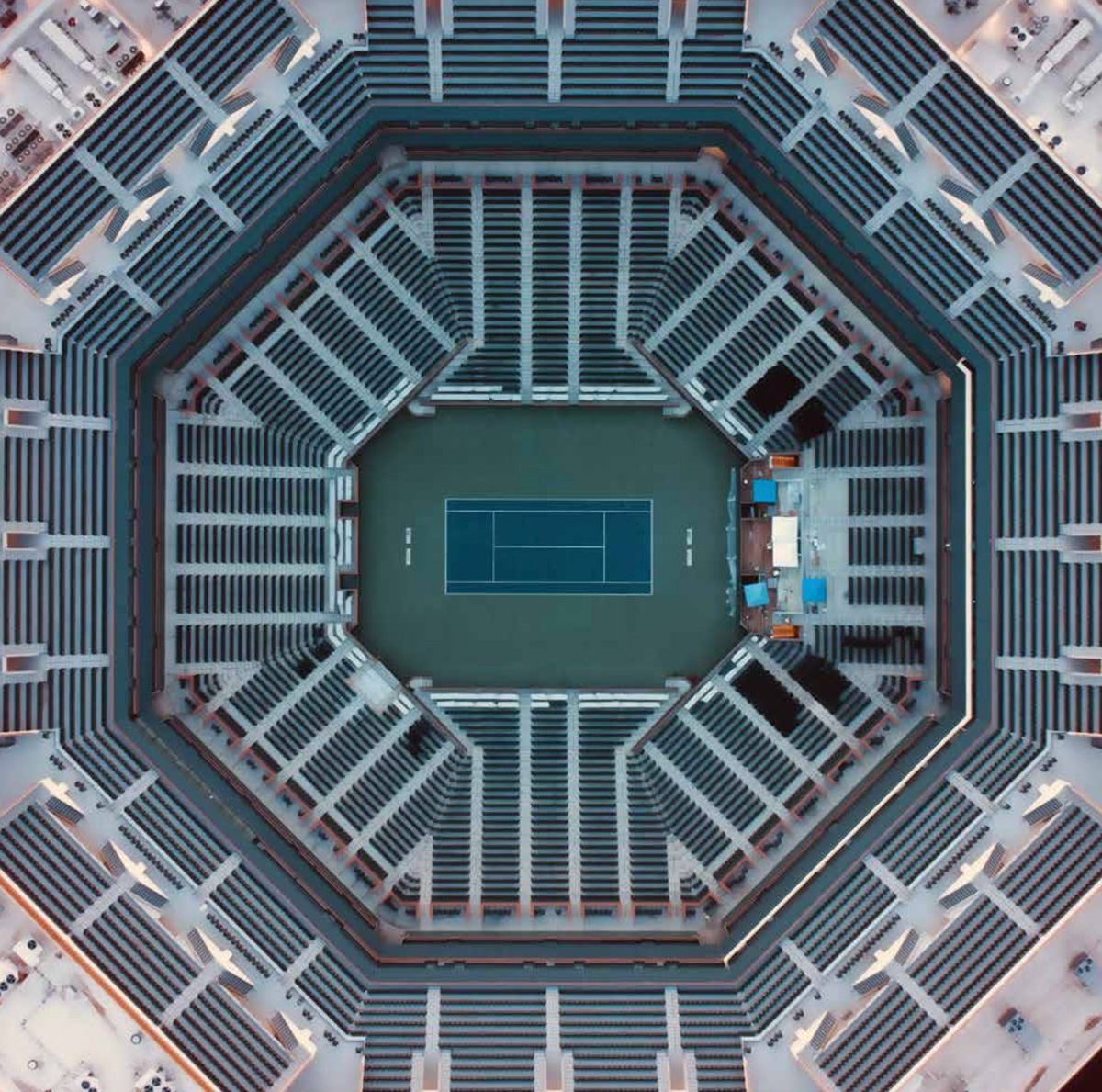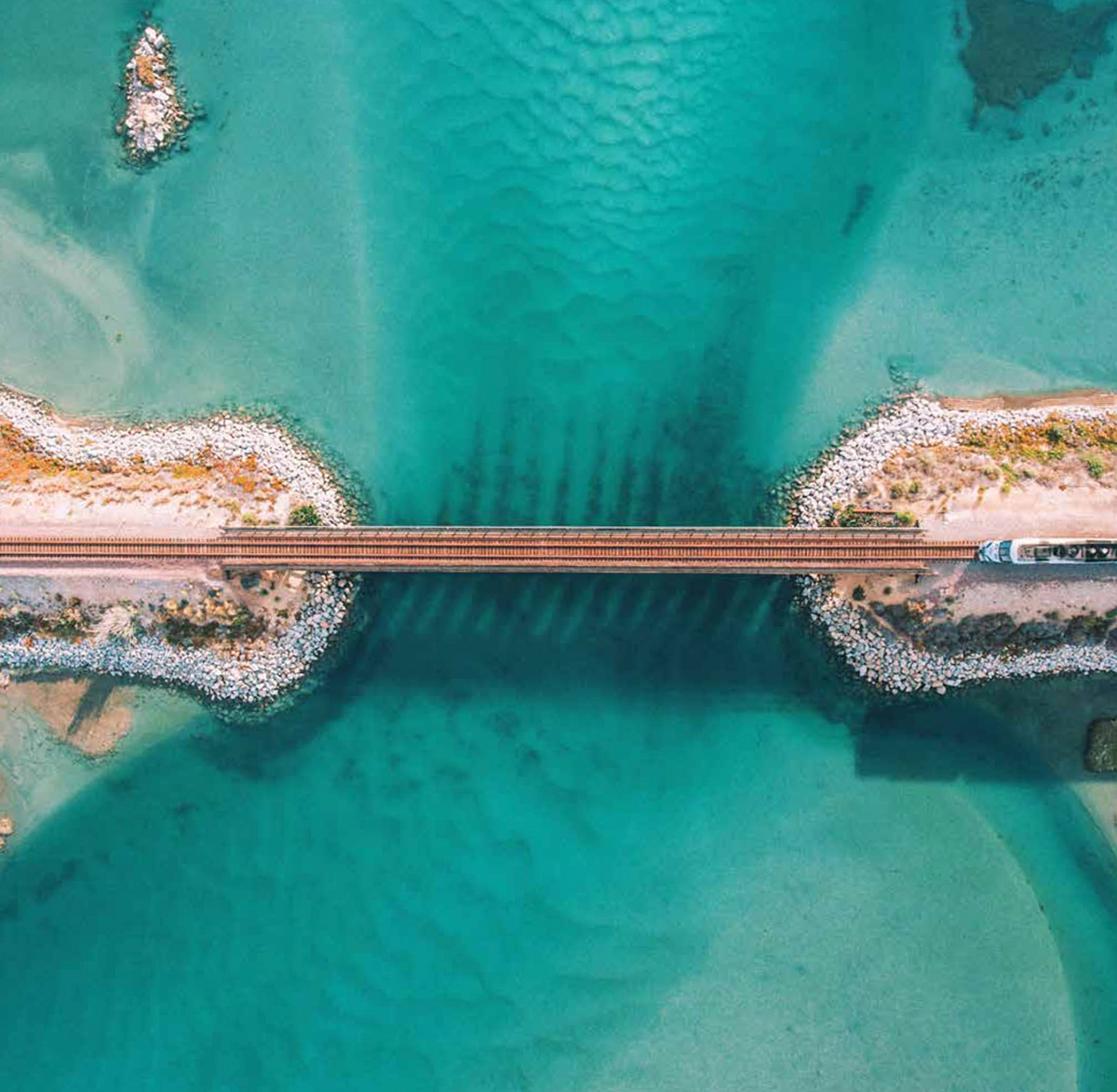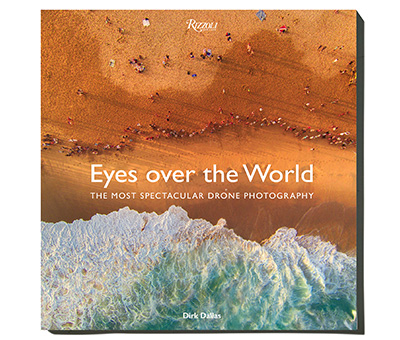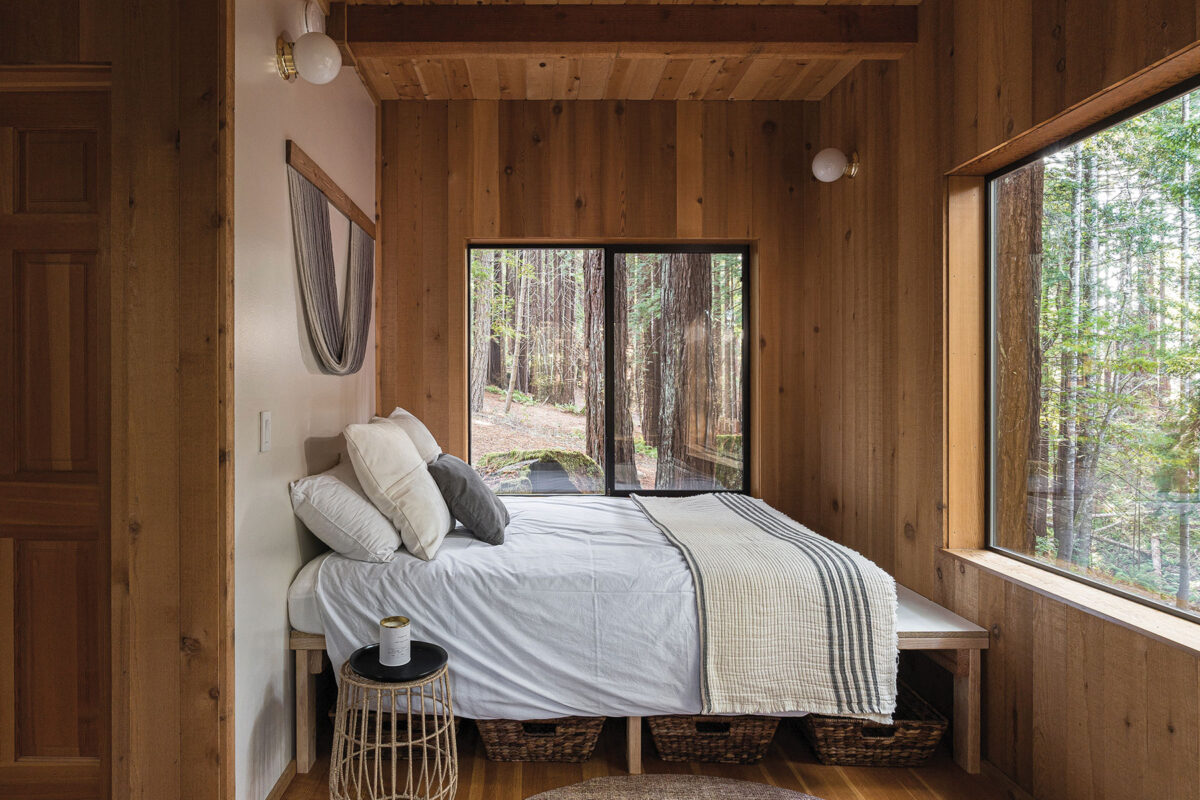The arid plains and paradisal shores of The Golden State feature heavily in a new book celebrating a dexterous new breed of lensman
Words by DIRK DALLAS
A change in perspective is a powerful thing. Photography has always gone hand in hand with adventure. Since cameras have existed, people have used them to discover different ways of seeing the world. As technology has advanced, so has the imagination of the artists who have been drawn to aerial photography as a medium — all leading up to the imaginative, ingenious and truly epic images in this book.

How many different ways can you look at sand? Where, on a planet comprised mostly of water, should you seek out unusual shapes in the sea? What unexpected patterns, geometry and juxtapositions can you see above forests, city streets or in glaciers? If, as an artistic medium, photography plays with the notion of “truth,” drone photography pushes that conceit into the next realm: it makes our world seem otherworldly.

I have always been captivated by flight. My earliest childhood memory is being awestruck looking out an airplane window — I remember flying through the clouds and getting chills as I saw a breathtaking landscape that looked unlike anything I’d ever seen before. As I grew older, my love of flight turned into flying R/C airplanes and helicopters.
Fast-forward to 2014, and my dad gifted me with a toy drone called the Parrot AR Drone 1.0, whose small camera allowed me to see fresh perspectives for the first time. This was a game changer, because it combined my love of flight with my love of photography. In 2014, I started the Instagram hashtag #FromWhereIDrone, which others began using; a small drone photography community was thus birthed. Today, it’s mind-blowing that the hashtag boasts over 1.2 million uses on social media and counting. As the curator of @FromWhereIDrone, my wish is that this photo collection creates a beautiful tapestry of our marvelous world as you have never seen it before.

An arid landscape offers the drone photographer a great opportunity: a natural setting that is close to canvas-like. Without buildings, waves or unwieldy vegetation, there is a strong, neutral background with more evenness, which invites the photographer to play with stark contrasts and our expectations from nature. Shown from above, an arid landscape takes on a mirage-like quality. Every image is magical, otherworldly and original.

With extreme temperatures, blowing sand and broad expanses of land and sky, these landscapes provide many challenges to photographers. The drone pilot should be prepared to protect their gear from the elements while being persistently observant. These environments are often devoid of life, so it’s crucial to scan the area for compelling subjects that can help tell a story and give context to a location, such as a mountainous sand dune, a prickly cactus, or a vehicle or person. When none of those elements exist, the best option for breathing life into a photo is to create something more abstract by using the natural leading lines, curves, patterns and textures that make these dry, desolate areas so majestic and serene.
“If photography plays with the notion of ‘truth,’ drone photography makes our world seem otherworldly”
DIRK DALLAS
The most impactful thing a drone photograph can do in an urban environment is reveal the epic scale of man-made order. By pulling the eye so far above the ground, cliched city landscapes become abstracted into shape and color, revealing an elegant symmetry. These kinds of pictures show the magnificent order of the world, invisible except from overhead.
Cities are one of the most accessible but difficult types of topography for drone pilots to capture. Drone pilots will often find that these areas require what can feel like complex airspace authorization. They will also find that it can be challenging to locate adequate takeoff or landing locations and maintain line of sight and an interference-free connection with the drone. All of these things need to be done while safely avoiding obstacles like trees, poles, buildings and people.
However, once those obstacles are overcome, urban terrain provides a unique look at the vibrant interaction between people and their environment. The urban sprawl is also unique in that it comes alive with buzzing vibrancy as the sun goes down: buildings begin to glow from interior lights, quickly changing the character, mood and creative possibilities.
Excerpted from Eyes Over the World: The Most Spectacular Drone Photography (Rizzoli New York, $35) by Southern California-based writer and photographer Dirk Dallas.
Feature image: Huntington Beach, California. Photo by Nicholas Litwin.
June 5, 2020
Discover more TRAVEL news.





